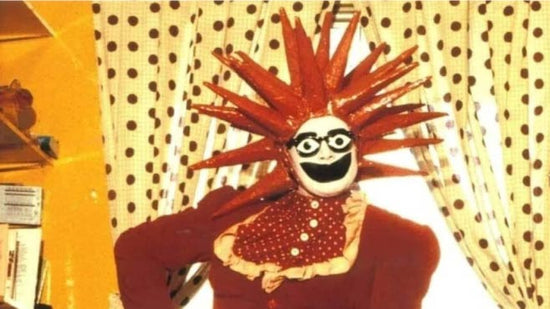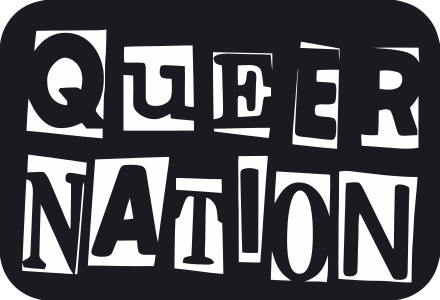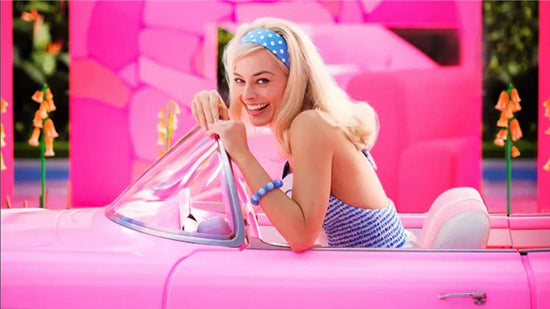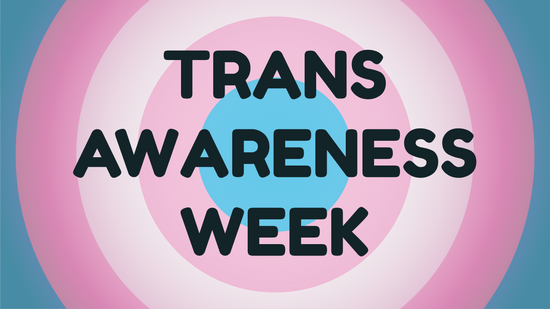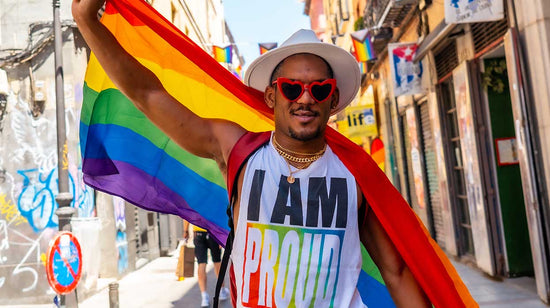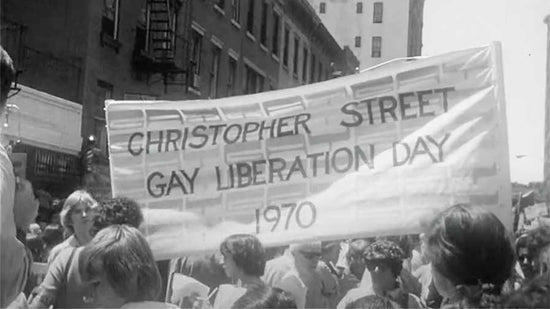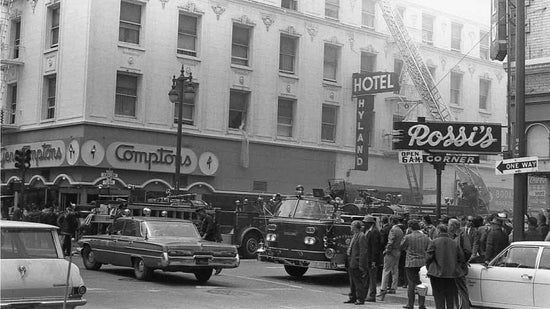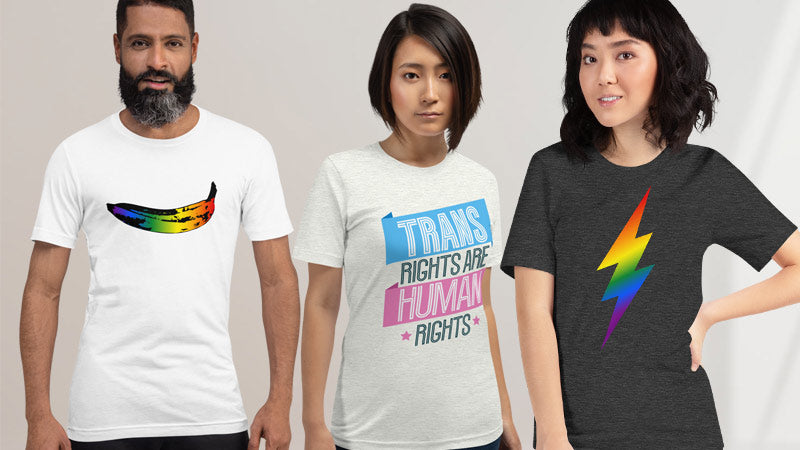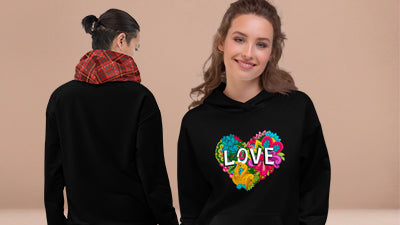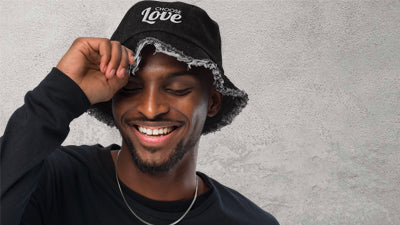When Is International Drag Day And Why Is It So Important To Support Drag Queens?

What’s that you say? A whole awareness day devoted to drag! Yep, it’s held annually on July 16th. And we hear you, you may think drag doesn’t seem to need its awareness boosted just now. The artform has exploded in popularity recently, and it can feel like there’s never a day when RuPaul’s Drag Race isn’t on television.
But hold up. While it would be easy to roll your eyes when you hear there’s an International Drag Day, it’s about a lot more than awareness.
International Drag Day Is Over 10 years old
You may be surprised to learn that International Drag Day started way back before RuPaul’s Drag Race arrived on our screens. It has taken some time to really get a foothold in our consciousness, but International Drag Day this year is going to be a big event.
It was started in 2009 by British drag fan Adam Stewart to celebrate the art of drag in all its forms. He had a drag fan page on Facebook and wanted a way to honour and give space to the queens he admired. Although back then you had to work quite hard to find any.
"International Drag Day is a day where all around the world on every gay scene we take this opportunity to celebrate and thank the drag artists that add so much to gay life and culture,” Stewart told Guidetogay.com, who were the initial media partner. “This is the reason I launched this concept. I saw that there was no such day or event on an international platform in which we celebrated drag artists."
For the first few years it had a very limited audience because few knew about it, and there simply weren’t the quantity of drag fans that we have today. But in recent years its visibility and popularity has increased significantly.
RuPaul’s Drag Race

The rise of International Drag Day has of course been underpinned by the exponential increase in popularity of drag, inspired by the extraordinary success of RuPaul’s Drag Race, which also aired its first season in 2009. Now having completed its 15th season, and with a multitude of spin offs, it has introduced the art of drag to a whole generation of people outside of the LGBTQ+ bubble, who would otherwise have never encountered it.
Along the way it’s made celebrities out of hundreds of drag queens and made a few dozen into genuine household names. Back in the 1990s and 2000’s when I was a working drag queen in London clubs, that would have been unthinkable. Back then we were struggling to earn £50 a night and our goal was just to get regular work.
There are those, however, within the LGBTQ+ community that have complained that the ubiquity of RPDR has made drag far too mainstream, even anodyne, when drag was all about rebelling and challenging norms. They claim it’s been normalised to the point where it’s lost its edge and the limited identikit-queen style has created a very narrow expectation of drag performers.
It’s certainly true that in the first 12 or so seasons RPDR supported a very narrow definition of drag. But with the addition of Gottmik and inclusion of trans queens and some of the other varieties of drag the show has begun, if a little late, to be more inclusive.
What Is A Drag Queen
The exact origin of the word drag as we understand it is uncertain. Men dressed as women to perform dates back centuries, but became popular in English Elizabethan theatre, around the time of Shakespear. Theatres were heavily linked with the church, and the church prohibited women from performing in the theatre in England. So all the female roles were played by men or boys.
One theory is that the word drag stems from a Shakespearian stage direction DRressed as A Girl. Another explanation is from the late 1800s, when the word drag in its current meaning entered the language. It’s been suggested that the gowns and petticoats worn for theatre performances or balls dragged along the floor, so the men who wore them described “putting on their drags”.
This was highlighted recently in a video by the great Trixie Mattel, who said it had been used by The Reynolds newspaper in the UK as a response to a party invitation "We shall come in drag!"
While British drag followed very much along the 'music hall' route through to the 1970s, in the US it went in a much more glamorous direction. Many of the performers at the time preferred female impersonator as a term, as that implied that they were a professional.
The word queen was probably added in the 1960s or ‘70s in the US, where some of the more flamboyant gay men became known as queens. And those who dressed as women therefore became drag queens. If you want to learn more about this era go to the Queer Music Heritage website which is an amazing history of the period.
In 1971, in the magazine Drag Queens, prominent drag queen Lee Brewster described a drag queen as a "homosexual transvestite" who is hyperfeminine, flamboyant, and militant.
Certainly the word transvestite has come to mean something entirely different and more sexual. But back then it simply meant dressing as the opposite sex. But the term drag queen had entered the lexicon.
Many of the people who were at the forefront of the Stonewall Uprising, such as Marsha P Johnson, Zazu Nova or Sylvia Rivera, called themselves drag queens or transvestites. But this was before the trans identity became understood. So some of those would in fact now identify as trans.
But the meaning of drag queen as we now know it was pretty much set by the late 1970s.

The Rise Of Drag Kings
Ok so let’s get one thing straight, drag kings have ALWAYS existed. You may not have come across them because of the dominance of the drag queen scene that has drawn almost all of the mainstream attention and coverage, but don’t for a second imagine that drag kings are less worthy of celebration.
The drag king scene is very different to the queens though. It’s much more political, more subversive, much more observant of the patriarchal culture and much more about playing with masculinity, mostly the toxic variety.
In fact drag kingery is so extraordinary that it’s worth it’s own blog, so look out for that in the next few weeks.
In the last six or seven years the popularity of drag kings in the UK and US has increased significantly. Inspired by the likes of King Frankie Sinatra in the UK, who hosts and produces the monthly King Of Clubs night at the famous Royal Vauxhall Tavern. Frankie has given many kings their first step into performance and been a spectacular showcase for the scene.
The Man Up drag king competition hosted by The Glory pub in East London is the biggest competition for drag kings in Europe and has become a huge event, with sold out crowds and a final watched live by a raucous audience. But I may be biassed as my friend Daisy May won in 2022 with her incredible alter ego Hans Off, and in second place was Dilly Boi, who you can see modelling our amazing clothing on the homepage of this very site.
But historically drag kings have been around for decades. You may not realise that Stonewall Royalty Stormé DeLarverie was a drag king, having toured and performed as the MC in the famous Jewel Box Revue.

10 Drag Kings You Should Follow
Why Is It Important To Celebrate Drag Now
In 2023 drag has found itself on the front lines of the ever expanding culture wars. What started as the targeting of the trans community by conservative religious groups in 2016, has now exploded into a full-scale attack in every mainstream British media platform, and many in the US and around the world are now joining in.
This year that targeting has widened, as we knew it would. One of the aims of the hate groups was to split trans people away from the rest of the LGBTQ+ community. That is proving more difficult than they perhaps anticipated, so they’ve decided to target queer identified people and drag queens, because most cishet people don’t know the difference between drag and trans.

Drag Queen Story Time
The first signs that the attacks on trans people were widening to the rest of the community began in the UK. The concept of Drag Queen Story Time was created back in 2015 by San Francisco author and activist Michelle Tea as a way of promoting diversity and inclusion.
Tea had been going to some events at a local library with her young son in which kids were read to, but she hadn’t found them to be very inclusive of any queer identities. So she set about creating something that was more welcoming and affirming for LGBTQ+ families and people who wanted their kids to experience a diverse range of people.
Drag queen Aida H Dee brought it to the UK in 2017 and had been delighting kids and parents alike with her amazing stories, spectacular looks and funny voices. Everywhere she went she spread joy to kids whose parents wanted their children to experience different identities and just have some fun.
But in 2022 the religious conservatives, who, seeing an opportunity to weaponise it and create outrage, unleashed their far-right attack dogs.
The result was that groups of far-right thugs began to turn up to advertised Drag Queen Story Time events, threatening people, screaming abuse at the families going inside and creating an incredibly dangerous atmosphere.
Seriously, imagine going to an event claiming to be ‘protecting the kids’ and creating an atmosphere of hate and intimidation that made those very kids feel truly scared.
The Honour Oak Pub in South East London saw some of the most appalling scenes, as counter protests sprang up to defend the events. As I write, these confrontations are still happening. But fortunately those protecting the events now far outnumber the aggressors.
To her eternal credit, Aida H Dee stood up to the haters and began a process of redirecting them to protest at the wrong venues, and Drag Queen Story Time continues to make kids happy.
Find out more about Drag Queen Story Time UK
US States Legislate Public Drag Bans
In America the Drag Story Time events were similarly targeted. Fed by hostile Republican rhetoric, the events came under attack by far-right groups such as The Proud Boys. The States in which Republican majorities had already enacted trans-hostile bills now turned their eyes to drag.
Even as I'm writing this blog Texas has become the fifth State to enact a public drag ban, although bans in other states, notably Tennessee, are now being blocked by legal challenges.
This politicisation of drag and trans identities is incredibly worrying. It’s clearly been birthed by the religious conservatives as another way to attack the LGBTQ+ community. Their incredible wealth is being spent on political lobbying. And the evangelical groups and The Republican now pretty much speak with one voice.
This is the great fear. There is a very real possibility that the fundamentalist religious groups may effectively one day be in control of the White House. Their Federal power through a zealot like Ron DeSantis would be incredibly destructive. The hateful rhetoric, lies and anti-drag propaganda will grow and these bans will be nationwide.
This is why International Drag Day this year will take on such importance. It’s not about awareness. It’s about protest, about re-education and about amplifying the voices of the drag community. We have to win hearts and minds and show people how utterly wonderful drag is and how appalling its opponents are.

How To Celebrate International Drag Day
More than ever we need to be celebrating and supporting drag in all forms this year.
There are usually big drag nights up and down the country with RPDR queens doing a turn, so by all means pop along to those, but it’s the grass roots of drag that you really need to get into. So get down to your local drag club, gay bar or drag brunch where there are performances and give the queens or kings all the support you possibly can. Clap loudly, but if you get a chance go and tell them you support them and how angry you are with the anti-drag idiots.

But also seek out some drag artists social pages and follow them, uplift their voices by reposting, post your support and get involved in their comments in a supportive way. Let the world know that you love and support drag queens and kings.
Stand in solidarity with the drag community as it comes under attack, especially the political attacks in the US. Learn correct responses to the vile and abusive tropes aimed at drag and have them ready in case you hear anyone using them. Be vocal in your support for drag queens and kings to colleagues, friends and family and educate yourself about the different types of drag. It’s about more than just death drops and prosthetic boobs.
Different Types of Drag Queen
If you only encounter drag on TV you’re missing out on a whole plethora of drag. RPDR has recently started to feature more types of drag, and we all applaud that, but the show has traditionally focussed on a very limited variety of queenery, which has rightly drawn much criticism. So what are the different types of drag?

Genderfuck/Androgyny
These queens like to challenge your perception of gender. You may find them in spectacular dresses and makeup but with a beard. Eurovision winner Conchita Wurst is a great example.
Faux Queen/Bio Queen
Biological females who wear the same style exaggerated makeup and costumes that a drag queen would wear.
Club Queen
Inspired by the huge makeup and outfits seen in the 80s and 90s clubs, they're usually amazing performers and can be found delivering fierce looks at 4am. Costumes are always big and usually spectacular because you've got to be loud to be seen in a dark club.
Look Queen/Fashion Queen
Always on point with their outfits and makeup. They absolutely know their designers and everything is about looking flawless. Often found on social media.
Goth Queen
Unsurprisingly these horror-inspired queens will usually be wearing black, with stark white foundation and dark makeup. They love to shock.
Fish Queen
Let's not go into the why they're called that, but focus on the fact that fishy queens are all about female realness. The idea is to look as convincing as possible. Usually very feminine as guys and meticulous in their looks.
Comedy Queen
Everyones favourite, the comedy queens have a sharp wit and usually deliver it with perfect timing. Can look great too, but can also be a bit of a clown.
Tranimal Queen
Weird and wonderful, these are the punks of the drag world. Often seen with prosthetic snouts or dog, faces etc, they usually look messy and thrown together, but it's all very carefully curated to challenge your ideas of what drag should be.
Pageant Queen
Very serious about their drag, they're probably the most meticulous about their look, which is expensive gowns, dresses and big costume jewellery. It's all about winning the competition and they're prepared to be judged.
Camp Queen
Not so much about the look, more about the attitude. That's not to say they don't look great, but the looks can vary. Lots of fun and always ready with a shady response, just don't upset a camp queen because that shade can become very cutting in an instant.
Fluid Drag Queen
The chameleons of the drag world. Not tied to any single style, fluid queens can adapt their looks depending on their mood or the occasion.
Transdrag Queen
Trans Drag Queens are either transitioning or have transitioned. They may have previously been a different type of queen such as a pageant queen. For a long time RuPaul refused trans queens on her show, but she relented, and trans queen Sasha Colby won season 15.
Activessle Queen
The activists. Usually found on a protest march or supporting a cause at a Pride parade. These queens campaign for something meaningful to them, such as housing for homeless LGBTQ+ kids or trans rights. The Sisters Of Perpetual Indulgence are the biggest group of this kind.
Mother/Mama Queen
Drag houses were born out of the ballroom scene. Where queens are affiliated and help each other. They usually share the same last name. The house Mama is the grand dame of the collective.
Baby Queen
Just starting out, usually in their teens, the baby queens are often finding their feet, their looks and their makeup style. But occasionally you encounter a baby queen with incredible talent who explodes onto the scene.
Club Kids
Club kids are all about the look, which is avantgarde, artistic and expertly put together, often with thrift store finds. Inspired by the likes of the 80s club kids such as Michael Alig in New York or the Taboo Club crowd in London. These queens are there to see and be seen.
But remember that these are labels, and as with any pigeonhole it’s dangerous to assume that someone fits neatly and wholly within it. People get angry about being labelled, and that’s because none of us can be described by a label alone. And it’s dangerous to assume everyone tagged with the same label is a homogenous group.
We are all combinations of many intersectional labels and some queens do, in fact, fall within multiple drag labels. Which one was I? I was a Fluid Queen, but mostly a Fishy Queen.
So, go forth and celebrate on July 16th. Support your local and favourite queens and kings and find some new and amazing ones to give your support to.
MORE BLOGS



